Easy & Healthy Lo Mein Vegan Recipe: Done in Minutes.
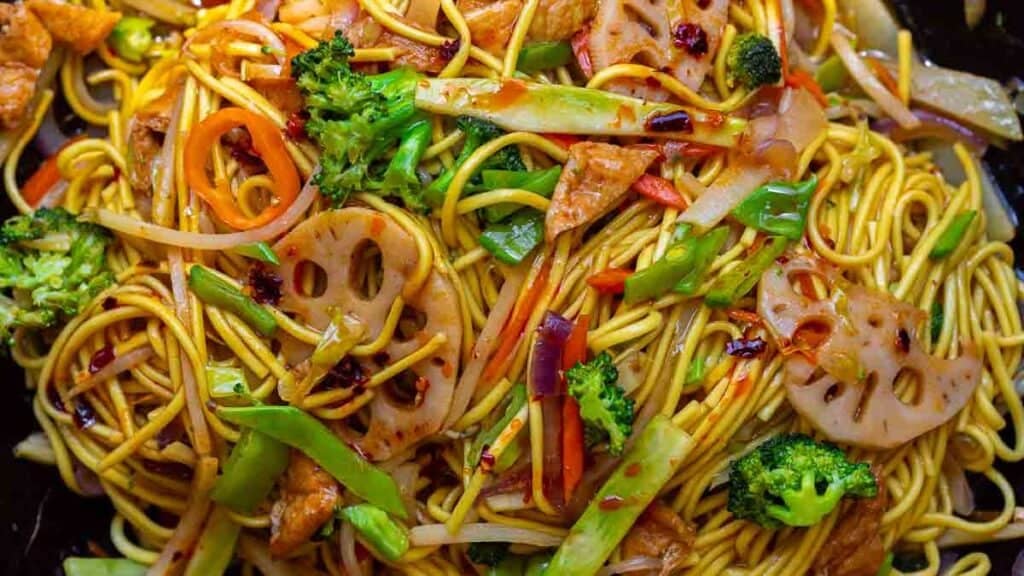
Easy.
Fast.
DELICIOUS!!
This quick and easy lo mein vegan recipe came together so effortlessly, I couldn’t WAIT to share it with you all. I love vegan lo mein noodles or vegetable lo mein, because it uses up all the colorful veggies that are lingering in my fridge. This stir fry includes very few “must have” ingredients. This vegan lo mein recipe is such a great option for a fast and easy weeknight meal, but also perfect for a dinner party. As one of my favorite dishes when I go out to Chinese restaurants, this easy vegan lo mein is now a go-to recipe in my rotation and I daresay it’ll now be one of yours!
So, without further ado, let’s get into it!
- What is Traditional Lo Mein?
- Why You'll Love this Lo Mein Vegan Recipe.
- Key Ingredients and Notes on Substitutions for Lo Mein Vegan Recipe.
- Tips for Lo Mein Vegan Recipe (READ BEFORE COOKING!!!).
- Step-by-Step Instructions for Making This Lo Mein Vegan Recipe.
- Frequently Asked Questions.
- Want More Great Noodle Recipes?
- Recipe Card.
Disclaimer: Some of the links in this post may be affiliate links for products I use and love. If you make a purchase after clicking one of those links, I may earn a small affiliate commission, perhaps enough to buy some extra gochujang or gochugaru 🙂
What is Traditional Lo Mein?
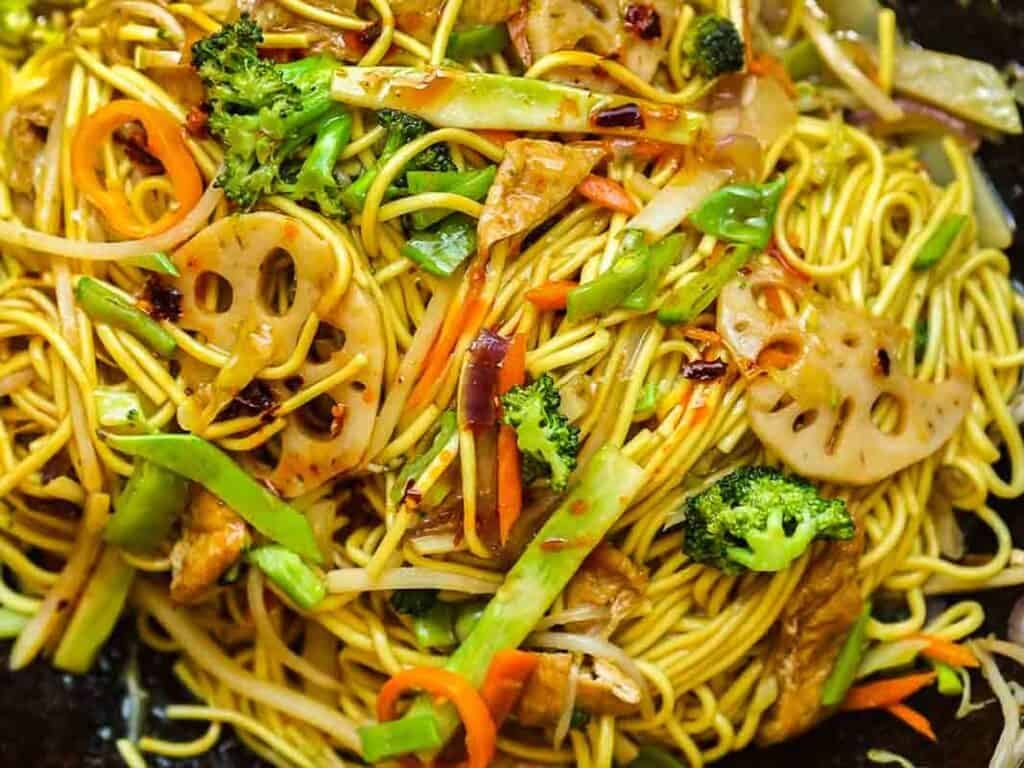
I always like to begin with the literal translation of the name of any non-English recipe, so I’ll begin there. While I don’t claim to be a native speaker, I know that “mein” refers to “noodles” (like in chow mein, which means “fried noodles”) in both Cantonese and Mandarin. The syllable “lo” means “stirred” or “tossed” in Cantonese and “tossed” or “dredged” in Mandarin. Hence, “lo mein” refers to “tossed noodles” or “stirred noodles.”
Lo mein is an incredibly popular Chinese dish that entails cooked noodles and stir-fried veggies. Typically, some type of protein is also added to the noodles to give it that “main” energy. I like to think that lo mein is to Chinese cuisine what bibimbap is to Korean cuisine, since bibimbap literally translates into “mixed rice.” And, as with bibimbap, the best part of a veggie lo mein recipe is that there are really no rules on what can or can’t go into it–it’s meant to be an “empty the fridge” sort of dish.
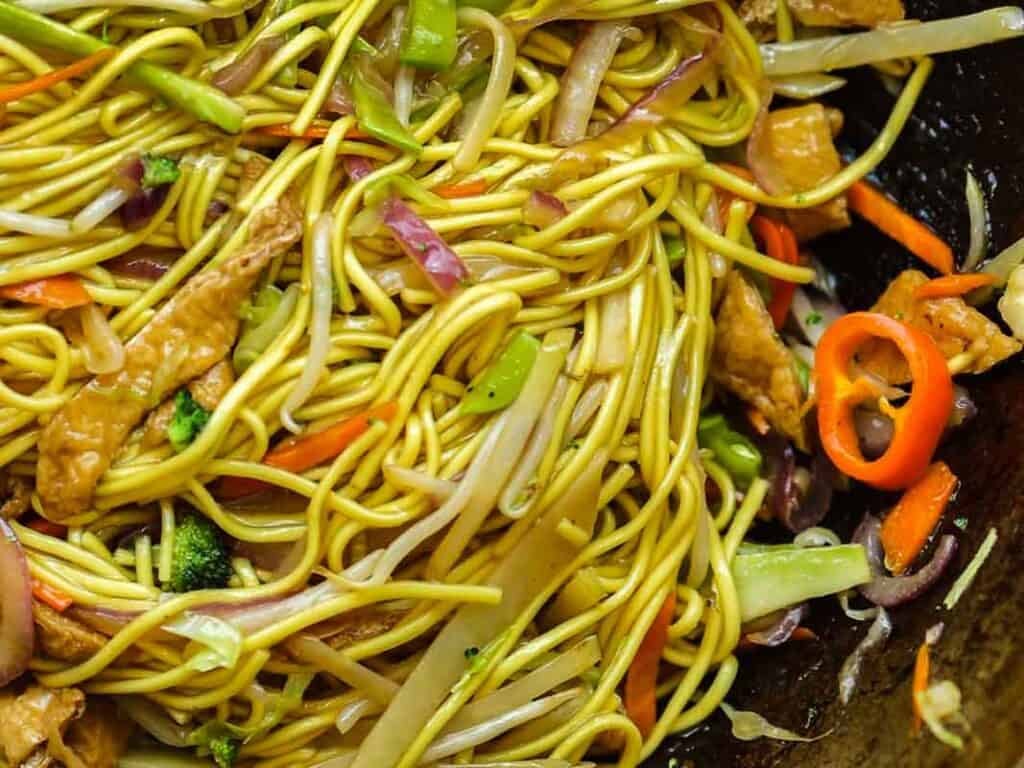
Why You’ll Love this Lo Mein Vegan Recipe.
You are going to love this lo mein vegan recipe because it’s:
- EASY
- NO-WASTE
- DELICIOUS
- HEALTHY
As I mentioned, this easy vegan lo mein recipe comes together in minutes. Moreover, whether you use fresh veggies or frozen vegetables, this lo mein vegan recipe is truly one that’s designed to empty your fridge. It’s also absolutely scrumptious–I could not believe how yummy the savory sauce was, despite how easily it all came together. And finally, with all the fiber and antioxidants you’ll be getting from all your veggies, this vegan veggie lo mein is a totally nutritious showstopper.
Key Ingredients and Notes on Substitutions for Lo Mein Vegan Recipe.
Noodles.
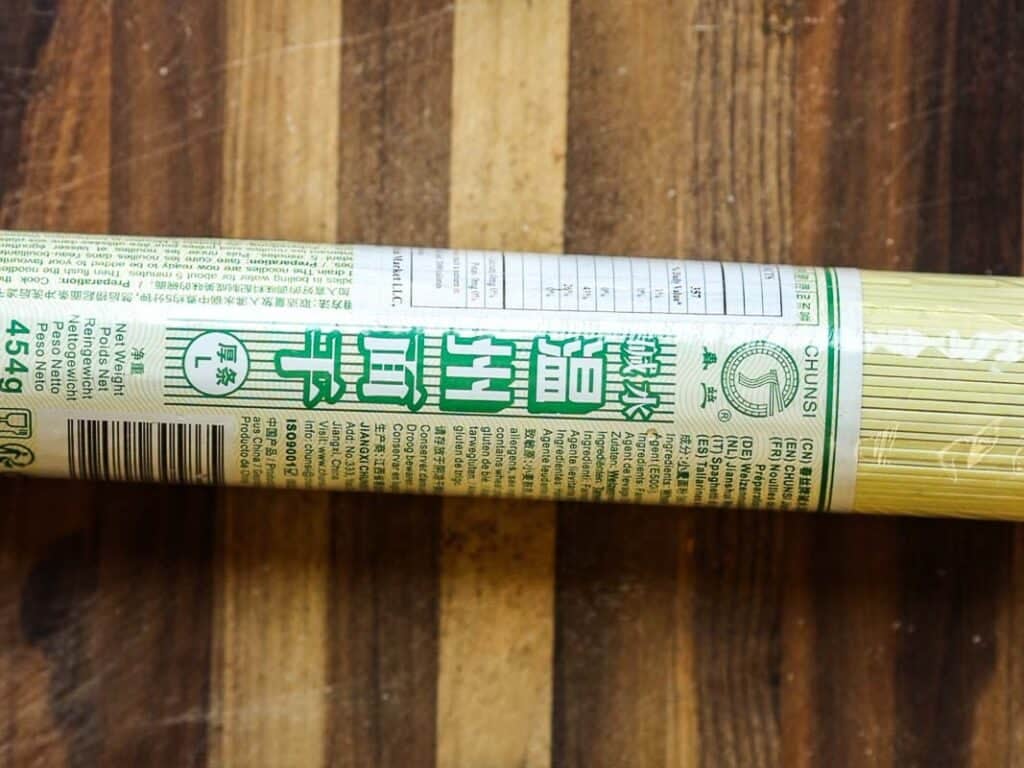
Traditional lo mein noodles are not vegan. And by “lo mein noodles” I mean the “mein” part of “lo mein.” The noodles for traditional lo mein are Chinese egg noodles–hence the lovely yellow color. I’ve consulted with a number of non-vegan lo mein recipes, all from Chinese or Chinese American cooks or chefs, and many of them suggest that you don’t need to be puritanical about your noodles. In fact, one Chinese American blogger suggested using spaghetti noodles (which, I can personally attest to, is one of my preferred substitutions for jjajangmyeon, which I grew up eating).
In terms of the kind of noodle (other than Chinese egg noodles), traditional lo mein uses wheat noodles that are usually wider than chow mein noodles. Accordingly, for this lo mein vegan recipe, linguine noodles might also be a great choice for substitution. The great thing is that Chinese grocery stores and markets offer a wide array of products featuring a thicker noodle that you can select for your lo mein. Most of them are also vegan noodles! For this lo mein vegan recipe, I picked up these alkaline wheat noodles from The Mala Market. The alkaline (oftentimes baking soda) helps to give the noodles a similar yellow tint to traditional lo mein noodles.
How about gluten-free noodles for this lo mein vegan recipe? Your best bet if you want to keep this lo mein vegan recipe gluten free would be to go with a rice noodle or even a gluten-free pasta (I love Jovial spaghetti for this recipe). I cannot speak to how a Chinese grandmother might react to such a substitution (!), so please don’t make a video saying “hey I’m making traditional lo mein but substituting with rice noodles”! You do you in your own gluten-free kitchen!
Ingredients for the Vegan Lo Mein Sauce.
The following are all the ingredients (and substitution suggestions) for the sauce that will go with this lo mein vegan recipe:
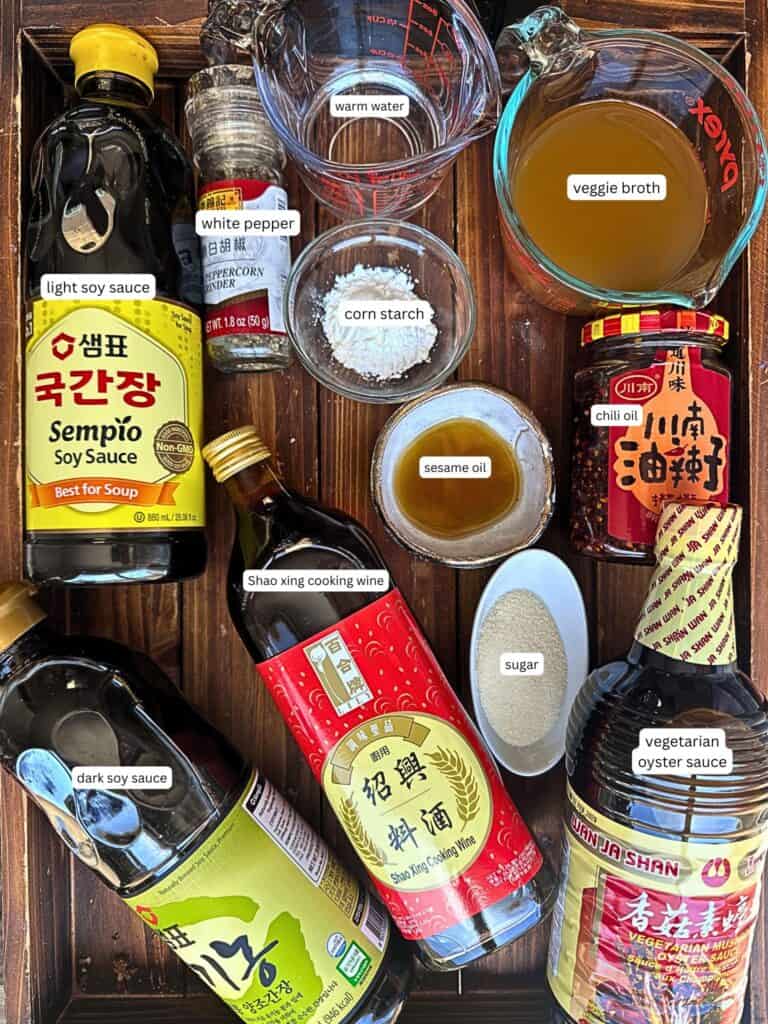
- Light (colored) soy sauce: Light (colored) soy sauce (not to be confused with light or low-sodium soy sauce) is actually saltier than dark or regular soy sauce. It usually has a cleaner, more direct flavor. Substitution suggestions: regular soy sauce, gluten-free soy sauce, gluten-free tamari, coconut aminos, low sodium soy sauce, Yondu.
- Dark (colored) soy sauce: Dark (colored) soy sauce or regular soy sauce will provide a little color and dynamic flavor (when paired with the light soy sauce) for our vegan lo mein sauce. Substitution suggestions: regular soy sauce, gluten-free soy sauce, gluten-free tamari, coconut aminos, low sodium soy sauce.
- Shaoxing cooking wine: Also spelled “Shao Hsing” cooking wine, this cooking wine is made from fermented glutinous rice. It is very similar to the rice vinegar that’s often used in Korean cooking. Note that many brands of Shaoxing are not gluten-free, as wheat is used in the fermentation process. Substitution suggestions: rice vinegar, mirin, fruit forward vinegar, dry sherry.
- Vegetarian Oyster (mushroom) sauce: Oyster sauce (the non-vegan kind) is a traditional ingredient in many lo mein recipes. Luckily, there’s a vegetarian (and vegan) version that is readily available at many Asian markets or online. Substitution suggestions: hoisin sauce, gluten-free hoisin, gluten-free vegetarian oyster sauce.
- Sugar. This lo mein vegan recipe calls for a little sweetness and I just went with straight up sugar, since that’s what was in all the traditional lo mein recipes I consulted. Substitution suggestions: brown sugar, coconut sugar, maple syrup, agave syrup, a couple mashed up dates.
- White Pepper. I saw a ton of recipes for traditional lo mein that also included white pepper, which is a hulled and ripe version of the prevalent black pepper. White pepper has a bit more umami and fermented flavor than its black counterpart, which is why it often shows up in Chinese dishes. Substitution suggestions: black pepper.
- Corn Starch. The vast majority of traditional lo mein recipes used a little corn starch to give the sauce a bit of thickness so this lo mein vegan recipe will do the same. Substitution suggestions: potato starch, arrowroot powder, tapioca starch.
Tofu.
Most lo mein recipes include some type of protein. When I was not vegan, I used to add chicken or beef to my lo mein. For this lo mein vegan recipe, I opted for protein because I had some in my fridge (it’s an empty your fridge recipe!). Specifically, I had some inari or yubu–fried tofu skin that’s used for yubuchobap (I sometimes call them “tofu pockets”). I simply sliced a whole bunch up and threw them in with my stir-fried veggies.
In terms of substitution ideas for the protein for your lo mein vegan noodles, you can pretty much go with whatever vegan protein you like for this lo mein vegan recipe. You can always fry up or bake some tofu if you want a crispier texture. If you’re like me and don’t want to deal with cooking the tofu, you can also go with pre-baked tofu (this teriyaki flavor will pair nicely with the sauce). You could also go with vegan chicken or soy curls that you stir fry with the rest of your veggies. And of course, you can nix the protein altogether and keep this a veggie only lo mein!
Vegetables.
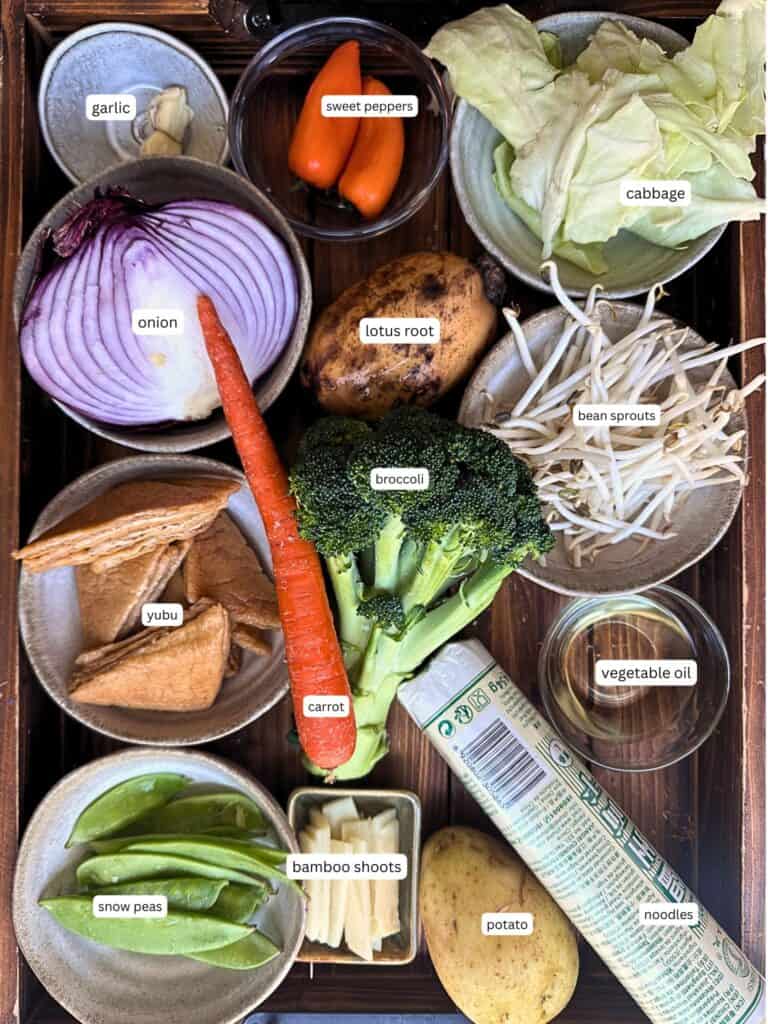
In true empty your fridge style, here are all the vegetables I included in this lo mein vegan recipe:
- Broccoli (including the stems, which are perfect for this recipe)
- Bamboo
- Lotus root
- Red onion
- Sweet peppers
- Green cabbage
- Bean sprouts
- Potato (I mean, I couldn’t help myself)
- Snow peas
- Garlic
- Carrot
These are a lot. You could probably get away with just choosing 3 or 4 of these vegetables and doubling the amount for this lo mein vegan recipe. But I really wanted to go with something that would give this lo mein vegan recipe plenty of color and texture. My point is, you can do this with a few vegetables or with a metric f***ton of them 🤣 In terms of substitutions, go with what you got in your fridge!!
Vegetable Broth.
Vegetable broth is employed to keep the noodles nice and slippery for this lo mein vegan recipe, something emphasized by EVERY single Chinese cook whose recipe I consulted. Substitution suggestions: warm water.
Sesame Oil.
A little sesame oil at the very end gives this lo mein vegan recipe a little lustre and richness.
Chili Oil (Optional).
I love a little chili oil on just about every noodle dish, including this lo mein vegan recipe, so I drizzled a little bit over the top of mine.
Tips for Lo Mein Vegan Recipe (READ BEFORE COOKING!!!).
I’ve heard more times than I can count “I love lo mein but mine always turns out not great :(” There are a couple of common mistakes people make when trying to recreate their favorite Chinese takeout dish. Let’s discuss some of them here:
Uniformly and Thinly Sliced Vegetables. In order to make sure your vegetables are fully cooked, you need to make sure they are uniformly and thinly sliced. I like to julienne all my vegetables in order to make them easier to slurp with my noodles.
Prepare All Components IN ADVANCE. As you’ll see in the step-by-step instructions below, you want to cook your noodles completely and whisk your sauce before you start stir-frying. Why? Because it all comes together very quickly AND you will need your hands to continue stirring and tossing to prevent sogginess. Have all your ingredients within arms’ reach (including the water and/or veggie broth!) before you turn that stove on!
Get Your Cooking Oil HOT! The worst thing you can do is not sufficiently heat your oil before adding your veggies. Once you add your veggies to not-yet-hot oil, they will take too long to cook and instead of getting nice and crisp, they’ll just be soggy and oily. Hence, I recommend using a wok for this lo mein vegan recipe (which is so great for keeping things hot!).

Constant Stirring. As the name “stirred” or “tossed” noodles suggests, both the vegetables and noodles need to be continuously tossed and stir-fried in order to prevent sogginess. This is not one of those recipes where you can just let your veggies “cook” while you walk away. NOPE. That is how you get soggy lo mein.
Add Veggie Broth or Water to Noodles. In order to avoid clumpy, sticky noodles, you want to make sure that you separate them while they are cooking in boiling water (not after!). If they’ve clumped up a bit after they’ve cooked (but before you’ve added them to the stir fry), loosen them up with a little oil or warm water. After adding them to the stir-fry, add veggie broth or warm water to make sure the noodles do not stick together while stirring.
Step-by-Step Instructions for Making This Lo Mein Vegan Recipe.
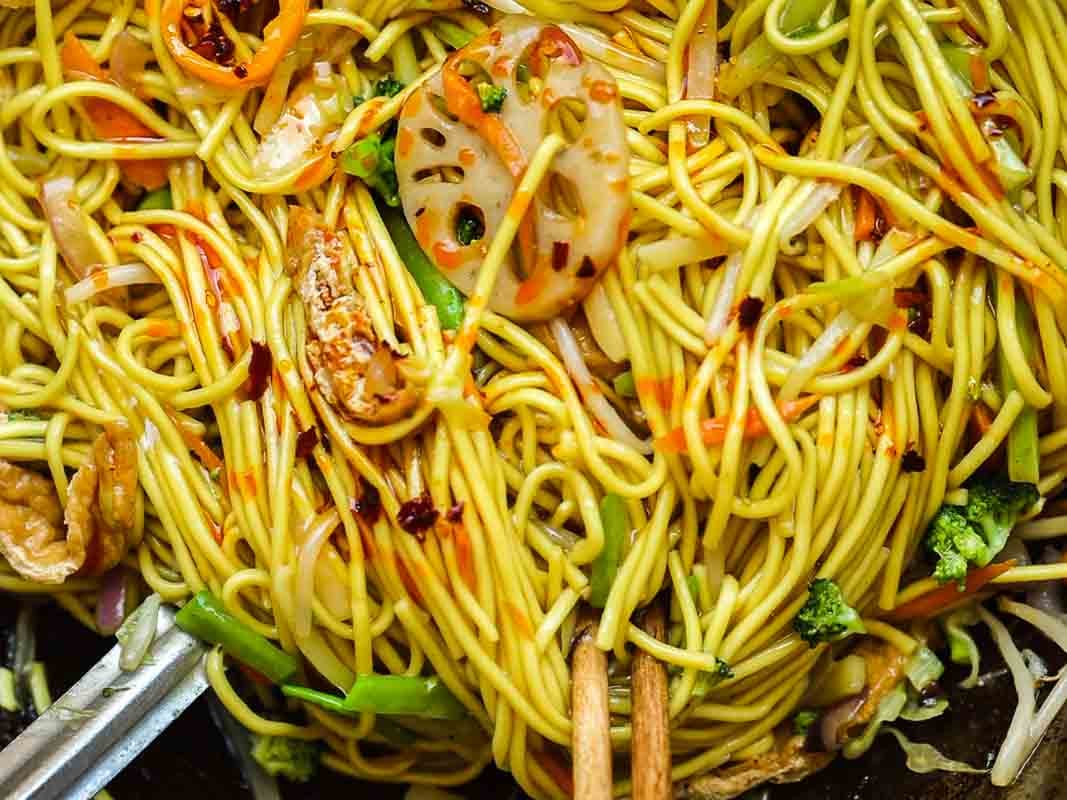
Cook your noodles according to package instructions (mine required about 6 minutes in boiling water). Give them a good rinse under cold water to keep them from overcooking. Set them aside.
While the noodles are cooking, make the sauce by whisking together the two different soy sauces, vegetarian oyster sauce, Shaoxing cooking wine, sugar, white pepper, and corn starch in a small bowl.
When the noodles are done, add oil to a wok or large, deep skillet over medium-high heat. When the oil begins to shimmer, add the onion and garlic and sauté until fragrant (around 2 minutes). Next add the carrots, broccoli, potato, and lotus roots. Continue sautéing until the carrots and broccoli start to turn very bright (around 3 minutes). Next, add the cabbage, bean sprouts, bamboo shoots, tofu, sweet pepper, and snow peas. Continue sautéing until bean sprouts begin to turn translucent (around 2 minutes).
Lower your heat to low and add the cooked noodles to your wok, together with your sauce. Stir vigorously to ensure that everything is well combined and evenly coated. Your noodles will likely be a little dry so add 1/4 cup of the veggie broth while you continue to stir. Continue adding more vegetable broth, 1/4 cup at a time, until the noodles are slick (not sticky). Remove from heat and drizzle with sesame oil and chili oil (if using).

Frequently Asked Questions.
What is the difference between lo mein and chow mein?
Lo mein uses a thicker noodle, while chow mein uses a thinner noodle. In addition, chow mein can refer to noodle dishes that use fried noodles in the recipe.
What do I do with the leftovers for this lo mein vegan recipe?
Leftovers can be stored in an airtight container in the refrigerator for up to 5 days. To reheat, simply place in the microwave for a couple minutes or stir-fry them with a little vegetable broth.
What kind of noodles should I use for lo mein?
Traditional lo mein uses Chinese egg noodles. You can buy them fresh or dry or even precooked and frozen. You can find several varieties of noodles that are great for lo mein recipes that are also egg free (and vegan).
Want More Great Noodle Recipes?
I got you. Check out the following:
Recipe Card.

Easy & Healthy Lo Mein Vegan Recipe.
Ingredients
Lo Mein Sauce.
- 1 tbsp light soy sauce
- 1 tbsp dark soy sauce
- 1 tbsp vegetarian oyster sauce
- 1 tbsp sugar
- 1 tsp Shao xing cooking wine
- 1/2 tsp white pepper
- 2 tsp corn starch
- 1 cup vegetable broth (or water)
Noodle Stir-Fry.
- 1 lb wheat noodles
- 2 tbsp vegetable oil (or any neutral oil with high smoke point)
- 1/4 cup red onion (julienned)
- 2 cloves garlic (minced)
- 1/2 cup broccoli (florets chopped and stems julienned)
- 1/2 cup carrot (julienned)
- 1/2 cup potato (julienned)
- 1/4 cup lotus root (thinly sliced)
- 1/2 cup bean sprouts
- 1/2 cup cabbage (julienned)
- 1 cup yubu (i.e., seasoned tofu skins, julienned)
- 2 sweet pepper (thinly sliced)
- 1/4 cup bamboo shoots (julienned)
- 1 tbsp sesame oil
- 1 tbsp chili oil (optional)
Instructions
- Cook your noodles according to package instructions (mine required about 6 minutes in boiling water). Give them a good rinse under cold water to keep them from overcooking. Set them aside.
- While the noodles are cooking, make the sauce by whisking together the two different soy sauces, vegetarian oyster sauce, Shaoxing cooking wine, sugar, white pepper, and corn starch in a small bowl.
- When the noodles are done, add oil to a wok or large, deep skillet over medium-high heat. When the oil begins to shimmer, add the onion and garlic and sauté until fragrant (around 2 minutes). Next add the carrots, broccoli, potato, and lotus roots. Continue sautéing until the carrots and broccoli start to turn very bright (around 3 minutes). Next, add the cabbage, bean sprouts, bamboo shoots, tofu, sweet pepper, and snow peas. Continue sautéing until bean sprouts begin to turn translucent (around 2 minutes).
- Lower your heat to low and add the cooked noodles to your wok, together with your sauce. Stir vigorously to ensure that everything is well combined and evenly coated. Your noodles will likely be a little dry so add 1/4 cup of the veggie broth while you continue to stir. Continue adding more vegetable broth, 1/4 cup at a time, until the noodles are slick (not sticky). Remove from heat and drizzle with sesame oil and chili oil (if using).
Notes
- Make sure to check out the Key Ingredients & Substitutions section above if you want suggestions on substitutions! 🙂
Nutrition
Did you like this recipe? If so, please leave a rating and share it!


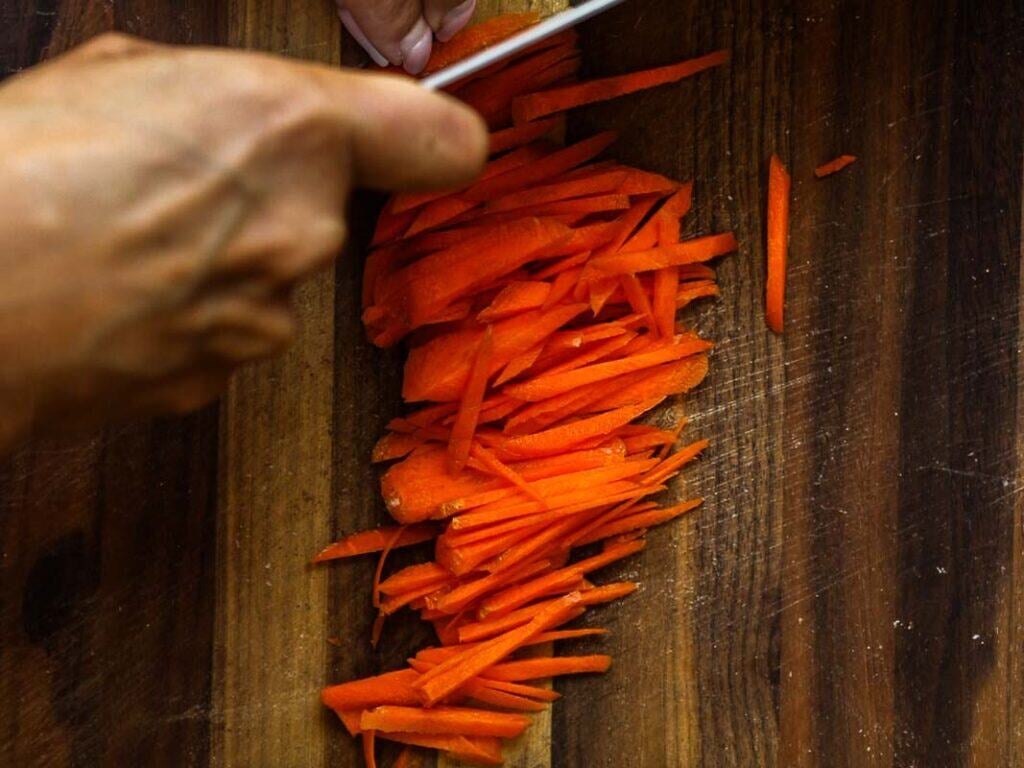
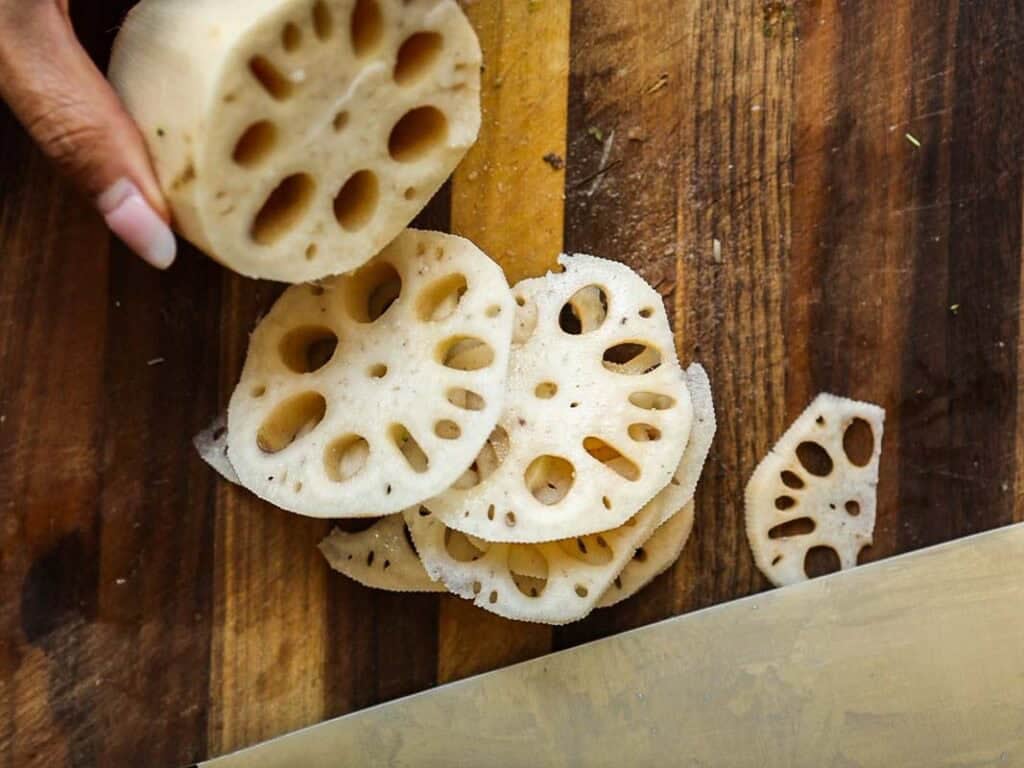
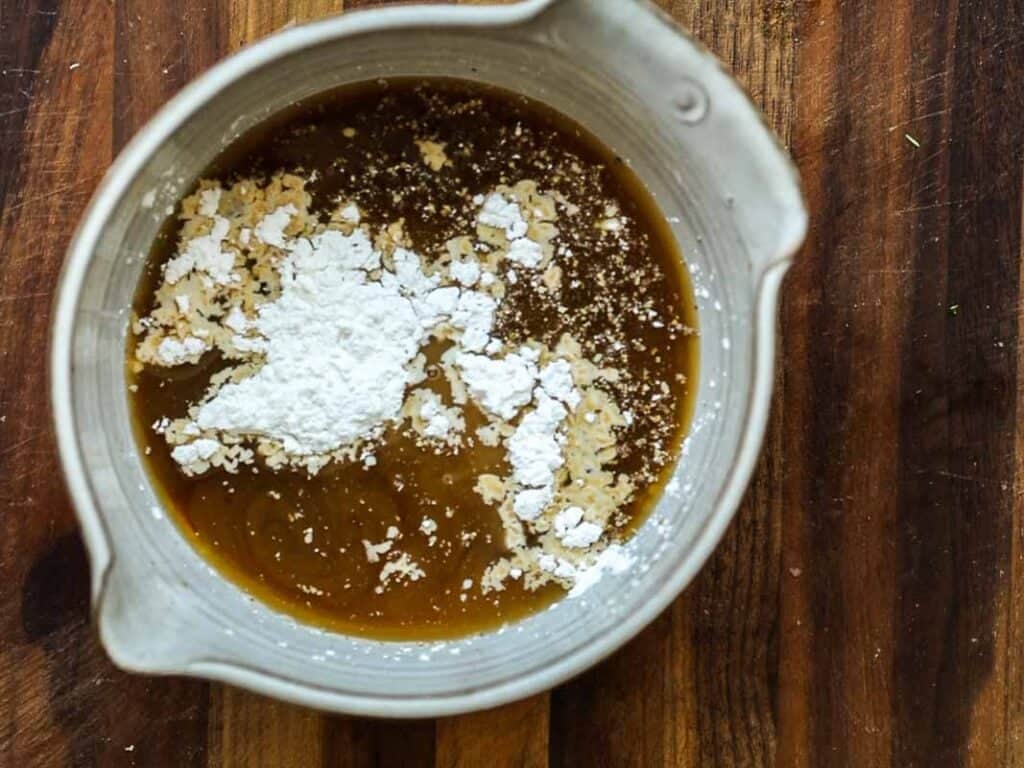
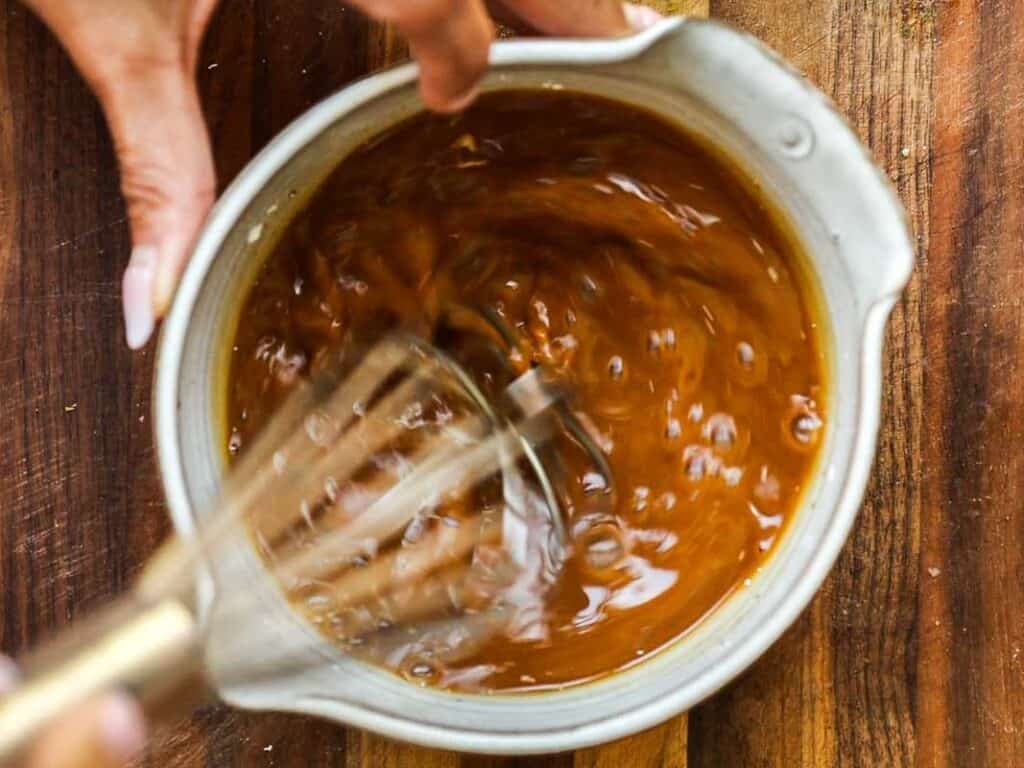
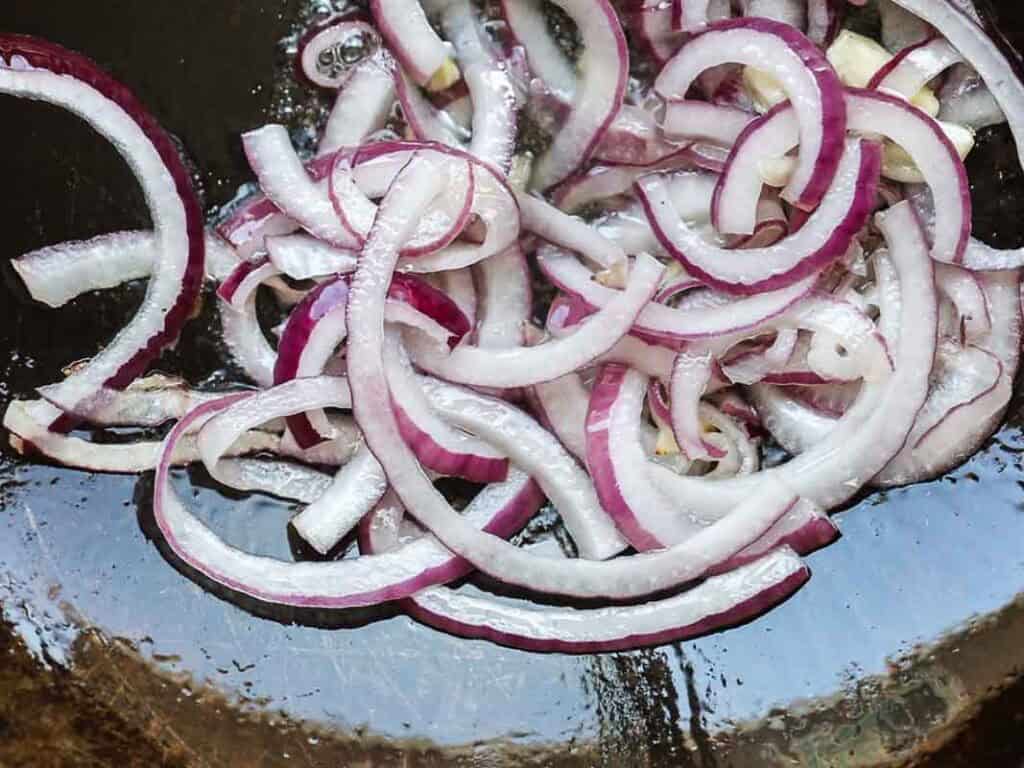

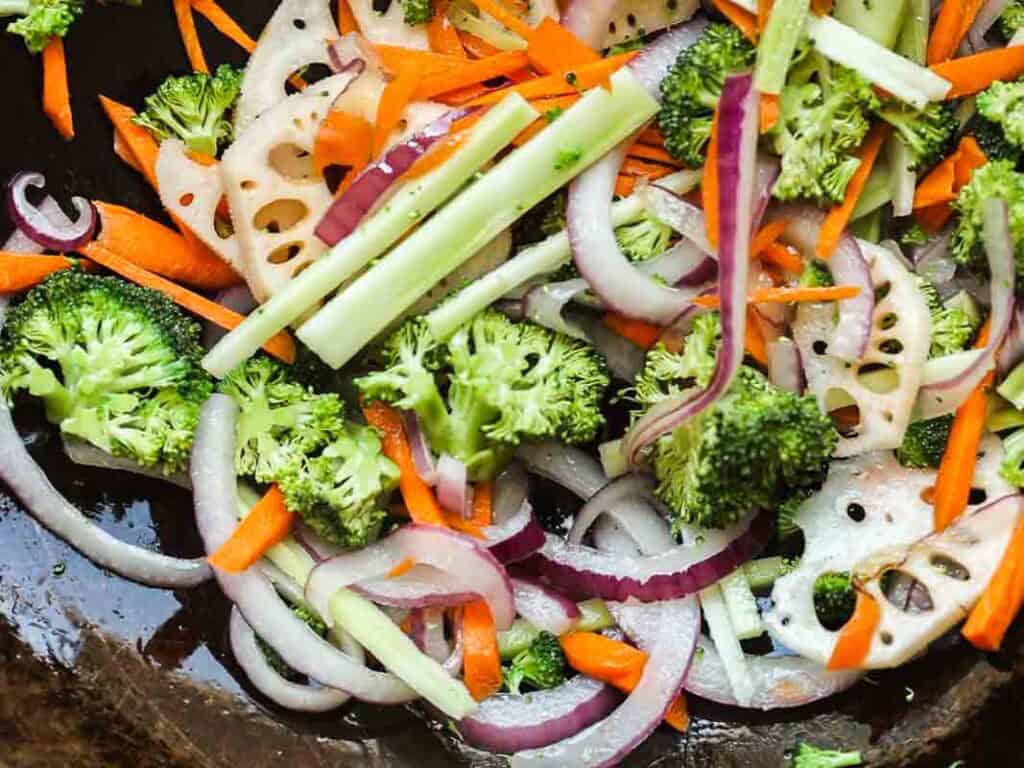
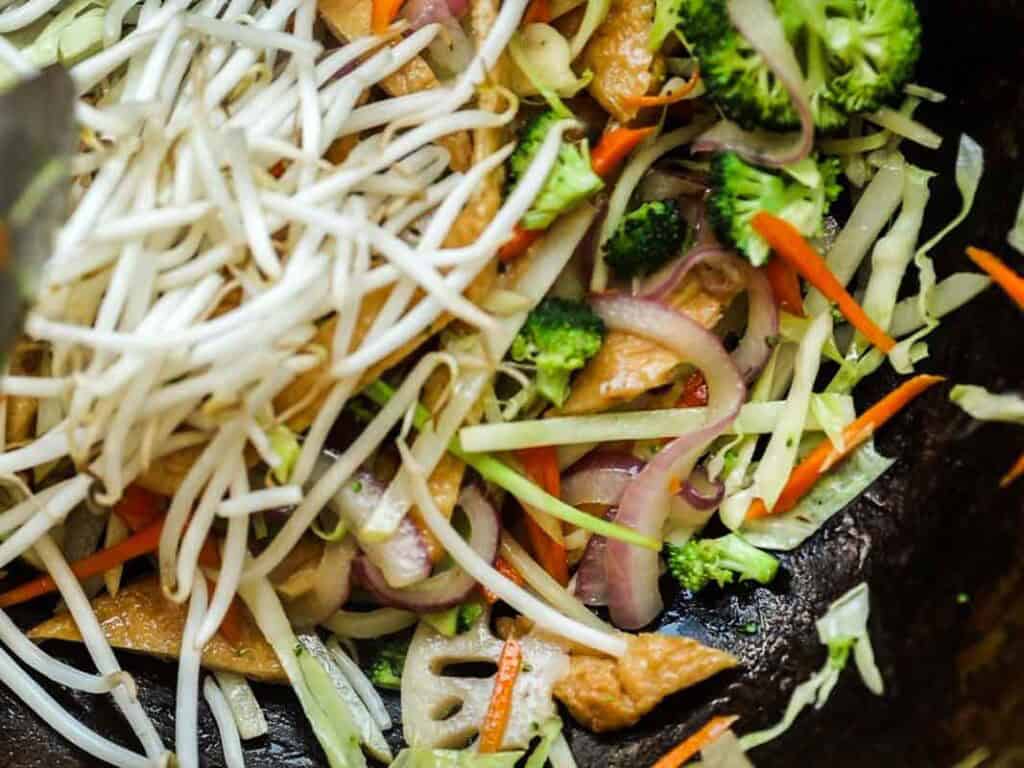
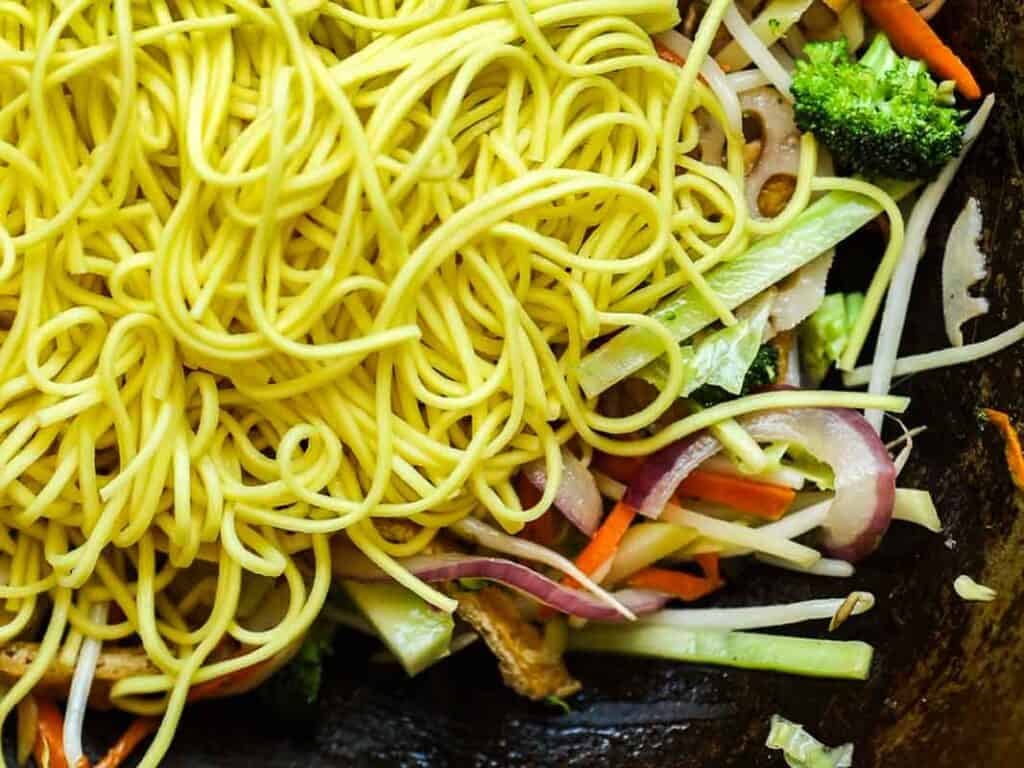
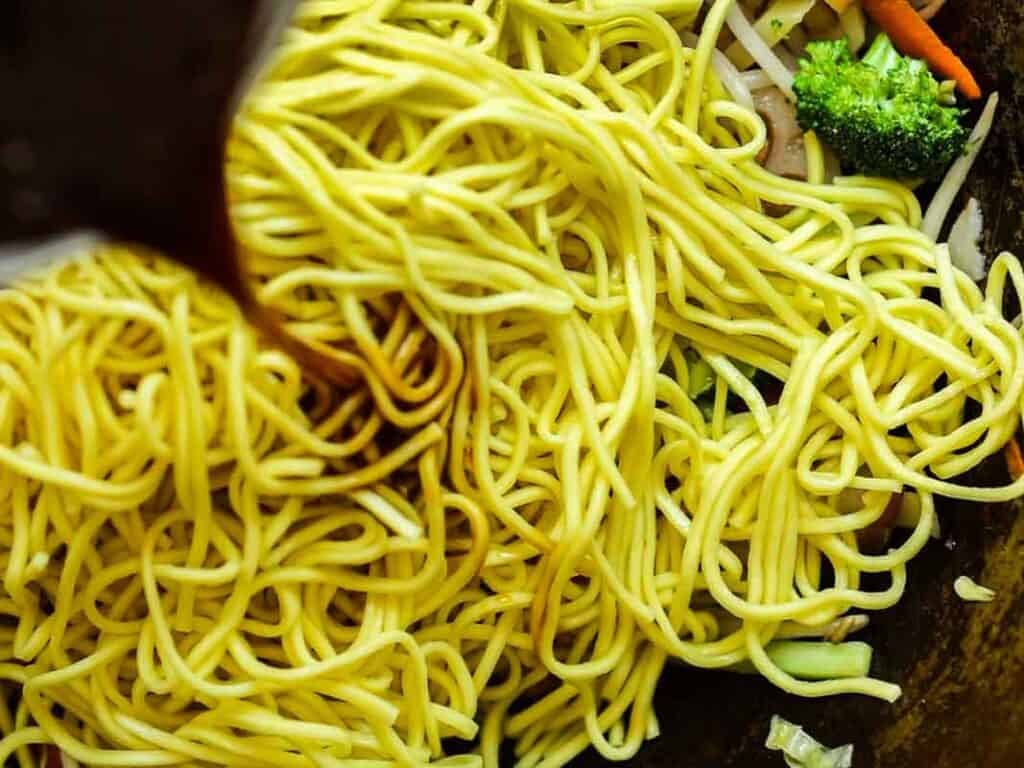


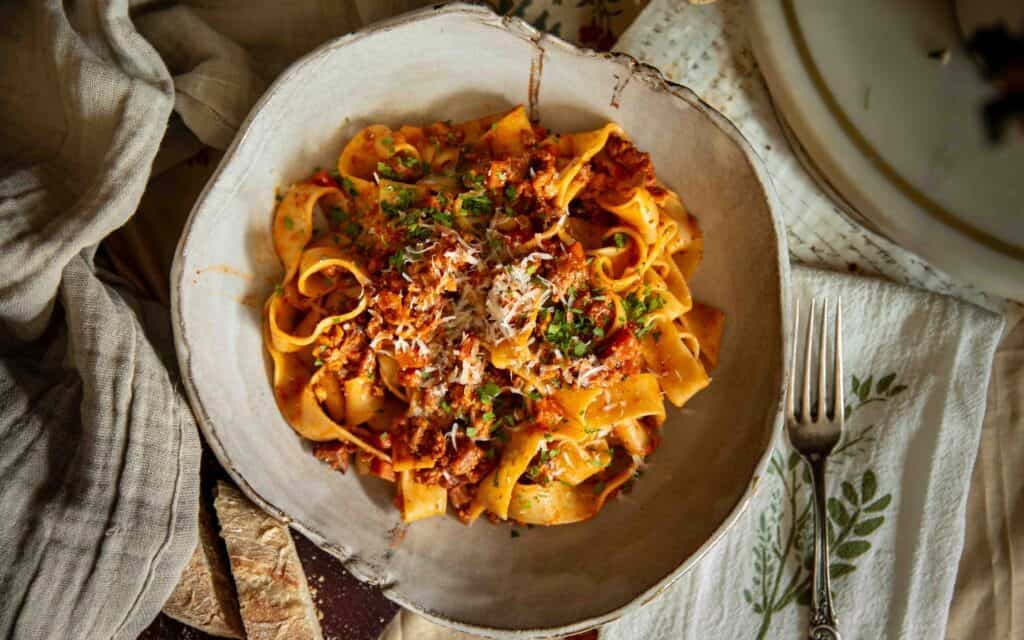
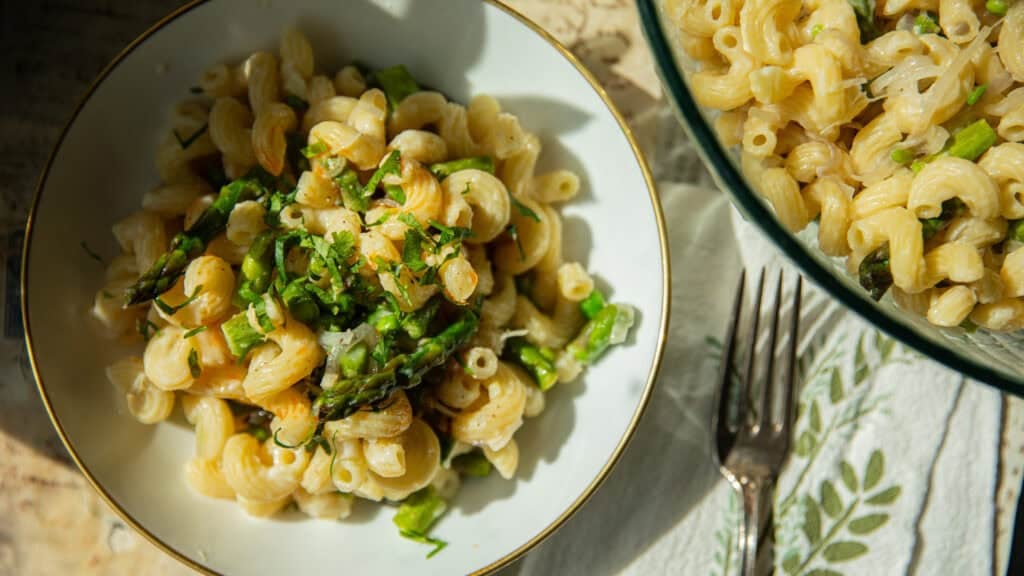





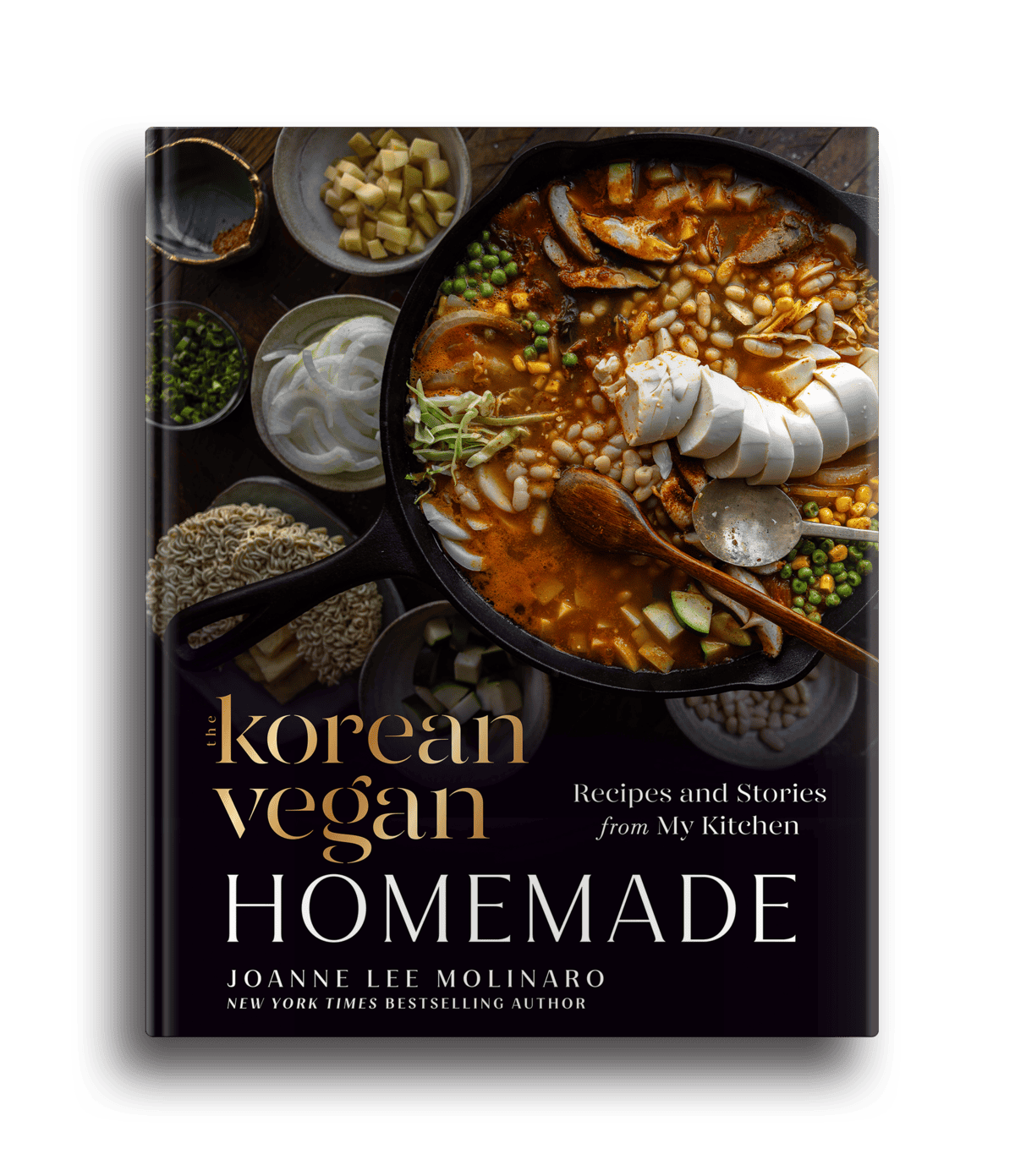
I don’t see a substitute for yubu? Thank you
This recipe is the tastiest and easiest “clean out the fridge” dish I have ever made. Fantastic!
Hi Amy, Thank you so much for trying the recipe!